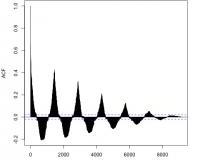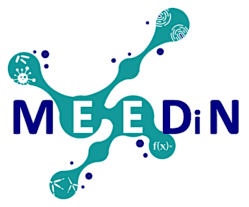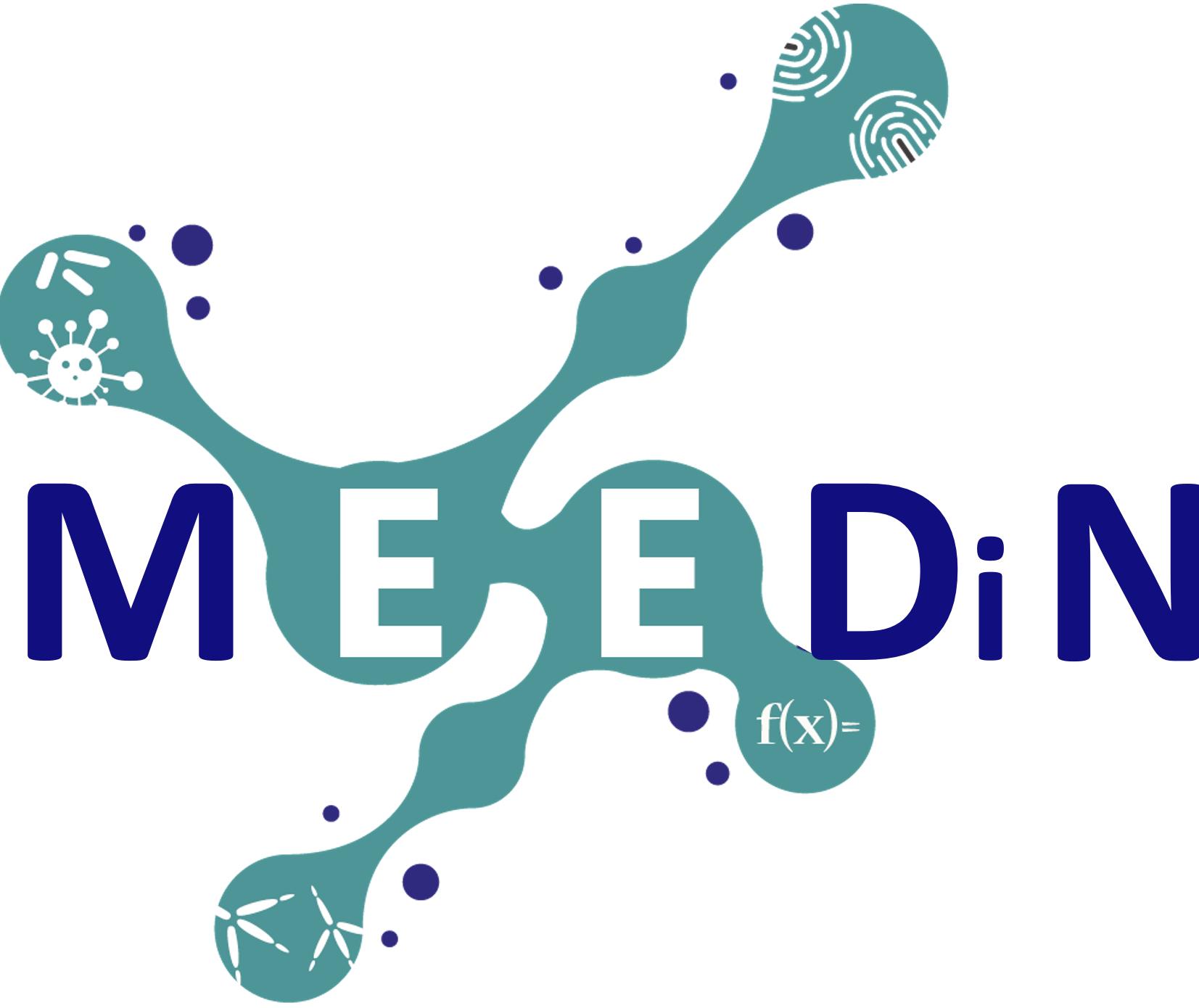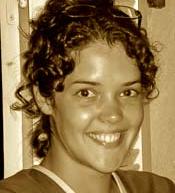The project advocates to study how adaptation of mosquito vectors to environmental modifications associated with global change impact their fitness and those life-history traits impacting vectorial capacity, in order to predict more accurately the epidemiological consequences of niche expansions and the spread of mosquito-borne pathogens. Such predictions are essential to adapt disease control programmes and avoid the emergence of vector-borne diseases. Toward this aim, the project will adapt the multi-state/multi-event capture-recapture analytical approach to the study of demographic parameters in natural mosquito populations. Individual capture histories will be obtained by 'tagging' mosquitoes with genetic fingerprints, using environmental DNA collected non-invasively. One of the aims is to verify whether the recent invasion of urban-polluted and coastal-brackish water habitats by populations of the Anopheles gambiae complex and Aedes aegypti, which are among the best vectors of malaria and dengue in the world, is adaptative, and to assess the cost of adaptation by comparing fitness trade-offs in reciprocally transplanted natural populations occurring in contrasting environments.
Project funding: ANR MoVe=>ADAPT (ANR-18-CE35-0006) 2019-2022
[Photo credit: ]
CURRENT TEAM MEMBERS

Funded by the project MoVe=>ADAPT (ANR).

Funded by an AUF scholarship and project MoVe=>ADAPT (ANR).

Funded by a Méditerranée Infection - Infectiopôle Sud scholarship and project MoVe=>ADAPT (ANR).

Funded by a CIRMF scholarship and projects Salt-Adapt (AUF) and URB-ANO (IRD).
PAST TEAM MEMBERS
CURRENT PROJECTS

Collaborators: Roger Pradel, Rémi Choquet (CEFE, CNRS, Montpellier), Ibrahima Dia (Institute Pasteur Dakar, Senegal), Michael Fontaine, Diego Ayala (CREES, MIVEGEC, Montpellier), Christophe Paupy, Olivier Roux, Pierre Kengne (MIVEGEC, IRD, Montpellier)
learn more ...

Collaborators: Carlo Costantini (CREES, MIVEGEC, Montpellier), Nil Rahola, Pierre Kengne (MIVEGEC, IRD, Montpellier), Ousmane Akone (CIRMF, Franceville, Gabon), Boris Makanga (IRET, Libreville, Gabon), Daniel Neafsey (Harvard School of Public Health, USA)
learn more ...
Since its discovery at the beginning of the twentieth century, the malaria vectorAnopheles gambiae has amazed the scientific community for its ability to occur virtually everywhere across sub-Saharan Africa. Such widespread eco-geographical distribution has been likely driven by its close association to humans and their habitats, who provide blood meals, shelters, and breeding sites. Understanding the origin and the mechanisms underlying the process of 'domestication' ofAnopheles gambiae can help towards the successful control of malaria in Africa. During arbovirus surveys at La Lopé National Park (Gabon), Anopheles gambiae and its close sibling Anopheles coluzzii were found occurring in remote locations, far away from any human activity. This observation has shaken our beliefs about the ecology of this vector, that is, that these mosquitoes are strictly confined to anthropogenic habitats and cannot survive and reproduce in the wild.
Given that it is currently unclear whether wild populations of these species are ancestral, this observation suggests that a process of local adaptation may have taken place in La Lopé, returning domestic populations ofAnopheles gambiae back to their ancestral wild status. Such process might involve genetic changes in larval ecology, feeding and biting behaviour. The main objective of the project is to investigate the origin and evolution of these adaptive traits in wild populations of Anopheles gambiae and Anopheles coluzzii.
Such understanding can have an impact on malaria control. First, it is necessary to know whether conventional control strategies (i.e. indoor insecticide spraying or insecticide-treated bed-nets) may affect wild populations of vectors, and the epidemiological consequences for human populations living at the edge of natural areas. Second, identifying the genetic basis of feeding on humans may be exploited for innovative genetic control strategies.
Funding: ANR WILDING (ANR-18-CE35-0002) 2019-2022
[Photo credit : ]

Collaborators: Carlo Costantini, Thierry Lefèvre (CREES, MIVEGEC, Montpellier), Florence Fournet, Nicolas Moiroux (MIVEGEC, IRD, Montpellier), Benjamin Sultan (LOCEAN, IRD, Montpellier), Claudio Lazzari (IRBI, CNRS, Tours), François Rouyer (Neuro-PSI, Institute of Neurosciences Paris-Saclay), Roch Dabiré, Simon Sawadogo (IRSS, Bobo-Dioulasso, Burkina Faso)
learn more ...
Populations of the most important human malaria vectors in Africa offer instances of adaptation to new ecological niches driven by human actions in a context of global change, with the dramatic consequence of emerging and re-emerging sustained malaria transmission across space and time. Physiological mechanisms allowing malaria mosquitoes to colonize new anthropogenic ecological niches are under scrutiny, however, less attention is given to behavioural modifications triggered by—or in response to—environmental cues characterizing such novel niches. Notably, it has been overlooked how environmental pressures impact the periodic behaviours of mosquitoes.
Adaptation of insects and their success in colonizing a wide array of diverse environments is associated with the temporal organization of their daily lives.Mosquito physiology and behaviour are expressed rhythmically, and the resulting periodicities at the individual level structure the community temporally, just as niche diversification can do so spatially. As mosquitoes exploit the natural oscillations of light, darkness, temperature, and resource availability to entrain their biological rhythms, differences in oscillatory characteristics associated with different environments have the potential to affect the physiological basis and overt expression of many of their periodic behaviours. Accordingly, adaptation to modified stimuli may not only be a requirement for surviving in new habitats, but it may also provide, through its effects on periodic behaviours associated with reproductive success, a mechanism of restriction to gene flow—a fundamental condition for local adaptation and, ultimately, speciation resulting in the diversification and diversity of the vectorial system.
This project aims to (i) identify if epidemiologically relevant periodic behaviours show altered rhythmicity in natural malaria vector populations; (ii) determine the adaptive value of these changes by measuring the associated fitness costs or benefits; (iii) measure the extent to which behaviours may be altered by infection byPlasmodium; (iv) determine the outputs of infection in mosquitoes displaying altered periodicity.
Funding: ANR ANORHYTHM (ANR-16-CE35-0008) 2017-2020
[Photo credit: ]
RELEVANT PUBLICATIONS Click here for the full list

Ecosphere
click for abstract ...
Salinity tolerance is an important trait that governs the ecology of disease‐vector mosquitoes by determining their choice of larval habitat, and consequently their ecological and geographical distribution. Here, we used laboratory strains to determine the osmotic responses of larvae of obligate freshwater disease‐vector mosquitoes (Aedes aegypti, Ae. albopictus, Anopheles coluzzii, An. gambiae, Culex pipiens, and Cx. quinquefasciatus) and assessed their relationship with salinity tolerance. First, we analyzed the acute dose–mortality response of fourth‐instar larvae to salinity; then, we measured their hemolymph osmolality after 24‐h exposure to varying salinities. We found that Ae. albopictus was the most tolerant species, followed by An. coluzzii, Ae. aegypti, Cx. quinquefasciatus, and An. gambiae, in decreasing order. Culex pipiens was the least tolerant species. All mosquitoes were hyper‐iso‐osmoregulators, but with species‐specific differences. Specifically, hemolymph osmolality in deionized water varied among species, and Cx. pipiens and the two Aedes species showed the lowest and highest osmolality. Although all species were osmoconformers at higher salinity values, hemolymph osmolality approached environmental osmolality more rapidly in species of the Culex genus, compared with Aedes species where it increased slowly. Moreover, hemolymph osmolality in deionized water was significantly correlated with tolerance to salinity across species. This could allow predicting the salinity tolerance of untested species on the basis of their osmoregulatory ability. However, this correlation disappeared when considering the hemolymph osmolality of larvae exposed to salinities higher than deionized water.
Read more
Evolutionary Applications
click for abstract ...
Explaining how and why reproductive isolation evolves and determining which forms of reproductive isolation have the largest impact on the process of population divergence are major goals in the study of speciation. By studying recent adaptive radiations in incompletely isolated taxa, it is possible to identify barriers involved at early divergence before other confounding barriers emerge after speciation is complete. Sibling species of the Anopheles gambiae complex offer opportunities to provide insights into speciation mechanisms. Here, we studied patterns of reproductive isolation among three taxa, Anopheles coluzzii, An. gambiae s.s. and Anopheles arabiensis, to compare its strength at different spatial scales, to dissect the relative contribution of pre- versus postmating isolation, and to infer the involvement of ecological divergence on hybridization. Because F1 hybrids are viable, fertile and not uncommon, understanding the dynamics of hybridization in this trio of major malaria vectors has important implications for how adaptations arise and spread across the group, and in planning studies of the safety and efficacy of gene drive as a means of malaria control. We first performed a systematic review and meta-analysis of published surveys reporting on hybrid prevalence, showing strong reproductive isolation at a continental scale despite geographically restricted exceptions. Second, we exploited our own extensive field data sets collected at a regional scale in two contrasting environmental settings, to assess: (i) levels of premating isolation; (ii) spatio/temporal and frequency-dependent dynamics of hybridization, (iii) relationship between reproductive isolation and ecological divergence and (iv) hybrid viability penalty. Results are in accordance with ecological speciation theory predicting a positive association between the strength of reproductive isolation and degree of ecological divergence, and indicate that postmating isolation does contribute to reproductive isolation among these species. Specifically, only postmating isolation was positively associated with ecological divergence, whereas premating isolation was correlated with phylogenetic distance.
Read more
Evolutionary Applications
click for abstract ...
Understanding how divergent selection generates adaptive phenotypic and population diversification provides a mechanistic explanation of speciation in recently separated species pairs. Towards this goal, we sought ecological gradients of divergence between the cryptic malaria vectors Anopheles coluzzii and An. gambiae and then looked for a physiological trait that may underlie such divergence. Using a large set of occurrence records and eco-geographic information, we built a distribution model to predict the predominance of the two species across their range of sympatry. Our model predicts two novel gradients along which the species segregate: distance from the coastline and altitude. Anopheles coluzzii showed a `bimodal' distribution, predominating in xeric West African savannas and along the western coastal fringe of Africa. To test whether differences in salinity tolerance underlie this habitat segregation, we assessed the acute dose--mortality response to salinity of thirty-two larval populations from Central Africa. In agreement with its coastal predominance, Anopheles coluzzii was overall more tolerant than An. gambiae. Salinity tolerance of both species, however, converged in urban localities, presumably reflecting an adaptive response to osmotic stress from anthropogenic pollutants. When comparing degree of tolerance in conjunction with levels of syntopy, we found evidence of character displacement in this trait.
Read more
Malaria Journal
click for abstract ...
In Burkina Faso, two chromosomal forms of the malaria vector Anopheles funestus, Folonzo and Kiribina, are distinguished by contrasting frequencies of shared polymorphic chromosomal inversions. Sympatric and synchronous populations of Folonzo and Kiribina mate assortatively, as indicated by a significant deficit of heterokaryotypes, and genetic associations among inversions on independently segregating chromosome arms. The present study aimed to assess, by intensive longitudinal sampling, whether sympatric Folonzo and Kiribina populations are characterized by behavioural differences in key malaria vectorial parameters.
Read more
PLoS ONE
click for abstract ...
Chromosomal inversions are thought to confer a selective advantage in alternative habitats by protecting co-adapted alleles from recombination. The frequencies of two inversions (2La and 2Rb) of the afro-tropical malaria mosquito Anopheles gambiae change gradually along geographical clines, increasing in frequency with degree of aridity. Such clines can result from gene flow and local selection acting upon alternative karyotypes along the cline, suggesting that these inversions may be associated with tolerance to xeric conditions. Since water loss represents a major challenge in xeric habitats, it can be supposed that genes inside these inversions are involved in water homeostasis. To test this hypothesis, we compared the desiccation resistance of alternative karyotypes from a colonised 2Rb/2La polymorphic population of A. gambiae from Cameroon. The strain included only the molecular form S, one of the genetic units marking incipient speciation in this taxon. Day-old mosquitoes of both sexes were assayed individually for time to death in a dry environment and the karyotype of each was determined post-mortem using molecular diagnostic assays for each inversion. In agreement with expectations based on their eco-geographical distribution, we found that 2La homokaryotypes survived significantly longer (1.3 hours) than the other karyotypes. However, there was weak support for the effect of 2Rb on desiccation resistance. Larger mosquitoes survived longer than smaller ones. Median survival of females was greater than males, but the effect of sex on desiccation resistance was weakly supported, indicating that differential survival was correlated to differences between sexes in average size. We found weak evidence for a heterotic effect of 2La karyotype on size in females. These results support the notion that genes located inside the 2La inversion are involved in water balance, contributing towards local adaptation of A. gambiae to xeric habitats, beyond the adaptive value conferred by a larger body size.
Read more
PLoS ONE
click for abstract ...
Background: Anthropogenic habitat disturbance is a prime cause in the current trend of the Earth’s reduction in biodiversity. Here we show that the human footprint on the Central African rainforest, which is resulting in deforestation and growth of densely populated urban agglomerates, is associated to ecological divergence and cryptic speciation leading to adaptive radiation within the major malaria mosquito Anopheles gambiae. Methodology/Principal Findings: In southern Cameroon, the frequency of two molecular forms–M and S–among which reproductive isolation is strong but still incomplete, was correlated to an index of urbanisation extracted from remotely sensed data, expressed as the proportion of built-up surface in each sampling unit. The two forms markedly segregated along an urbanisation gradient forming a bimodal cline of ∼6-km width: the S form was exclusive to the rural habitat, whereas only the M form was present in the core of densely urbanised settings, co-occurring at times in the same polluted larval habitats of the southern house mosquito Culex quinquefasciatus—Conclusions/Significance: Our results indicate that when humans create novel habitats and ecological heterogeneities, they can provide evolutionary opportunities for rapid adaptive niche shifts associated with lineage divergence, whose consequences upon malaria transmission might be significant.
Read moreNEWS

more ...
MAIN COLLABORATORS
Montpellier









